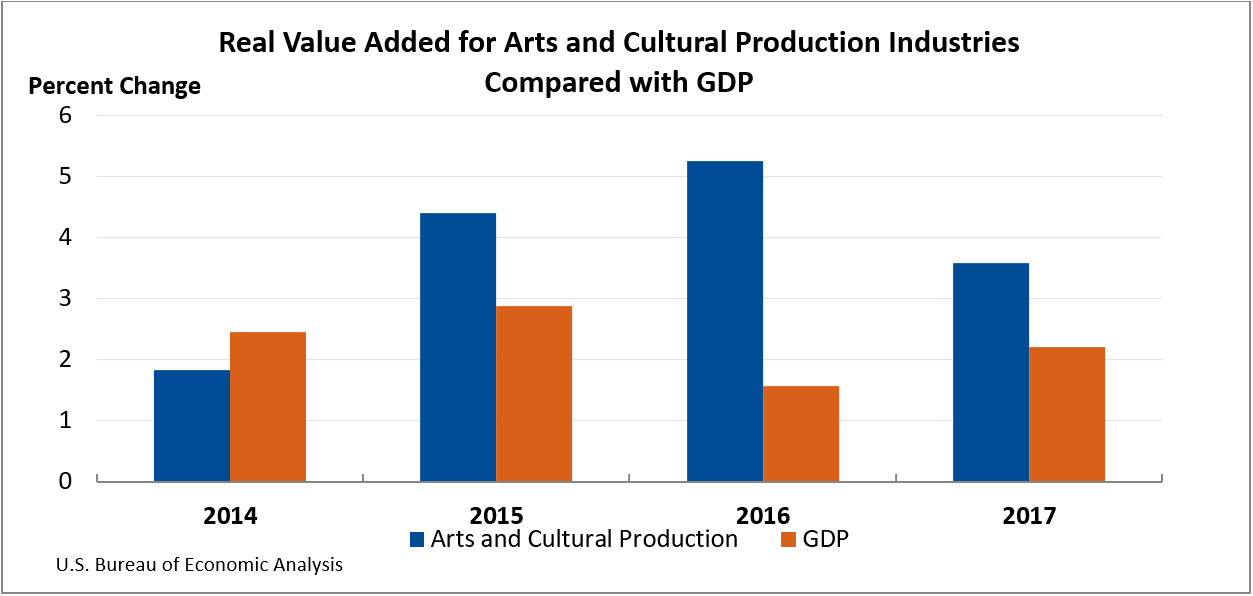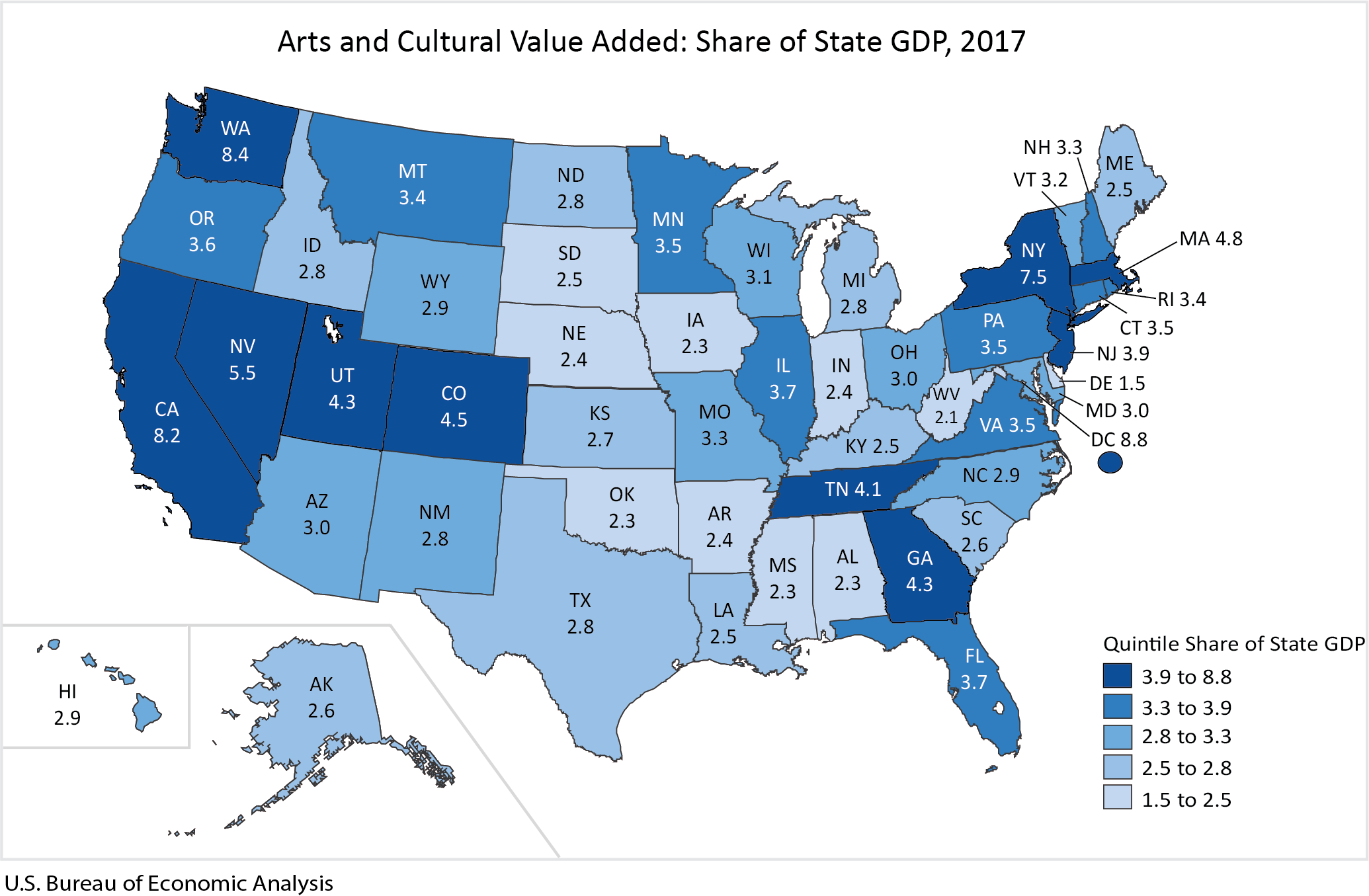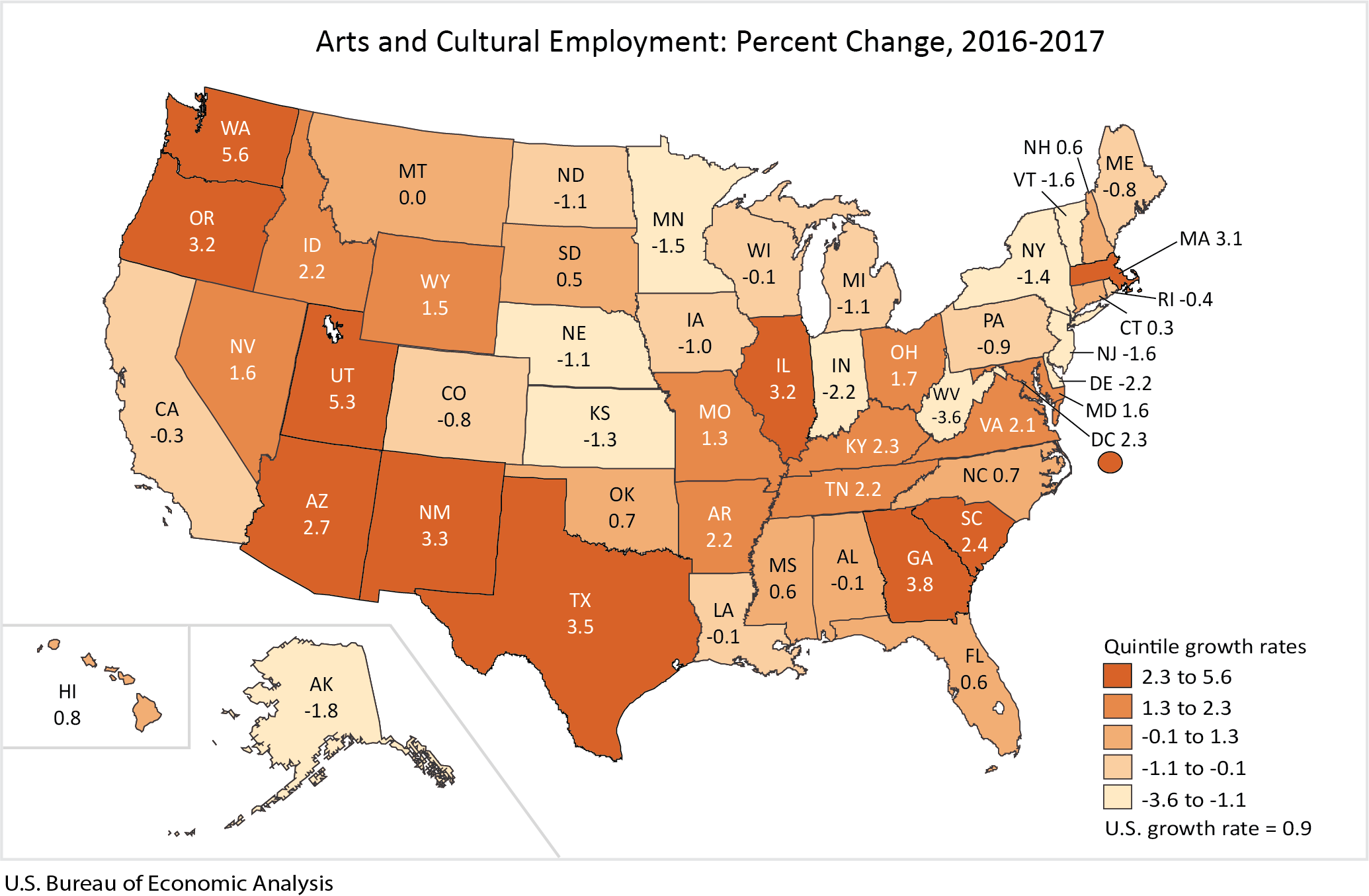News Release
Arts and Cultural Production Satellite Account, U.S. and States 2017
Washington leads states with 11.5 percent growth
The Arts and Cultural Production Satellite Account released today by the U.S. Department of Commerce's Bureau of Economic Analysis (BEA) shows that arts and cultural economic activity, adjusted for inflation, increased 3.6 percent in 2017. That compares with a 5.3 percent increase in 2016 (table 1). Arts and cultural economic activity accounted for 4.5 percent of gross domestic product (GDP), or $877.8 billion, in 2017 (table 2 and 3). With this release the arts and cultural production statistics are updated to incorporate revised data from BEA's National Income and Product Accounts.
Information services was the leading contributor to the overall growth in arts and cultural production at the national level in 2017, followed by design services. Core arts and cultural production industries, which include performing arts, museums, design services, and fine arts education, grew 2.7 percent. Supporting arts and cultural production industries, including art support services and information services, increased 4.0 percent.
- For performing arts, real value added increased 3.4 percent in 2017, after decreasing 0.7 percent in 2016. The leading contributor to the increase was independent artists, writers, and performers, which increased 4.9 percent in 2017, after decreasing 5.5 percent in 2016.
- For design services, real value added increased 2.8 percent in 2017, after decreasing 1.2 percent in 2016. The leading contributor to the increase was architectural services, followed by advertising.
Nominal Value Added
Nominal value added (not adjusted for inflation) increased 4.6 percent nationally in 2017 (table 2). The leading contributor to the increase was information services, which includes the broadcasting and publishing industries (table 4). Core arts and cultural production industries increased 4.4 percent, to a level of $179.0 billion; the leading contributors to the increase were performing arts and design services. Supporting arts and cultural industries increased 4.7 percent, to a level of $676.7 billion; the leading contributor to the increase was information services.
Nominal value added in arts and cultural industries increased in every state and the District of Columbia in 2017, except West Virginia, Louisiana, Vermont, and Michigan. The percent change in value added in arts and cultural industries across all states ranged from 11.5 percent in Washington to -3.1 percent in West Virginia in 2017 (table 4).
For states and the District of Columbia, the arts and cultural share of total GDP ranged from 8.8 percent in the District of Columbia to 1.5 percent in Delaware (table 3). The share for most states ranged between 2 and 5 percent. The District of Columbia, Washington, California, New York, and Nevada were the only areas where the arts and culture share of total GDP exceeded 5 percent.
The top arts and cultural industries varied among the states. In the District of Columbia, government and broadcasting were the leading contributors to the share of total GDP (table 3). In Washington, publishing and retail industries were the leading contributors to the share of total GDP. In California, information services and independent artists, writers, and performers were the leading contributors to the share of total GDP.
Employment
Arts and cultural employment nationwide increased 0.9 percent in 2017 (table 8). The total number of arts and cultural jobs for the nation was 5.1 million. Arts and cultural employment increased in 29 states and the District of Columbia. The percent change in arts and cultural employment across all states ranged from 5.6 percent in Washington to -3.6 percent in West Virginia.
Washington had 167,004 jobs related to arts and culture, representing 4.7 percent of all jobs in the state. The retail industry was the leading contributor to the increase in total arts and cultural employment in Washington (table 9).
Updates to the Arts and Cultural Production Satellite Account
Today, BEA also released updated arts and cultural production statistics at the national level on output, value added, intermediate inputs, employment, and compensation from 1998 to 2016 and updated state statistics on value added, employment, and compensation from 2001 to 2016. These revised and newly available arts and cultural production statistics primarily reflect the incorporation of the 2018 comprehensive update of the Industry Economic Accounts, released on November 1st, 2018. This comprehensive update incorporated updated definitions and classifications as well as statistical changes, including improved methodologies and newly available and revised source data. Combined with new and revised arts and cultural production-specific source data, these improvements allow the arts and cultural production statistics to more accurately capture the dynamics of this sector.
BEA's Arts and Cultural Production Satellite Account is supported by funding from the National Endowment for the Arts.



